MOSQUITOES
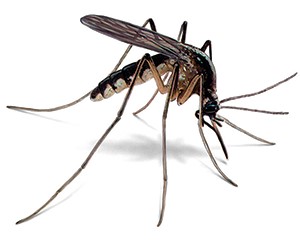
Family: Culicidae
Appearance:
Mosquitoes belong to the same group as the true flies, Diptera. As such, they have a single pair of wings. They typically have long, thin legs and a head featuring a prominent proboscis. Mosquito bodies and wings most often are covered in tiny scales. Adult sizes may range from 3 to 9 mm.
Common types of mosquitoes:
- Culex Mosquitoes
- Aedes Mosquitoes
- Anopheles Mosquitoes
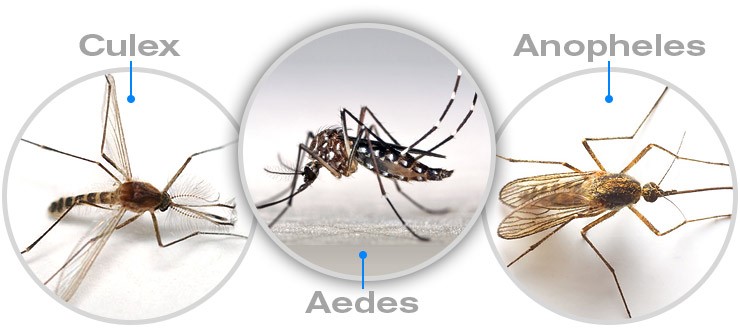
Culex Mosquitoes
Typically bite at night both indoors and outdoors; they prefer avian hosts, but will bite humans.
Lay eggs in rafts on the water surface of polluted freshwater sites and artificial containers.
Transmit diseases : Elephantiasis, Encephalitis
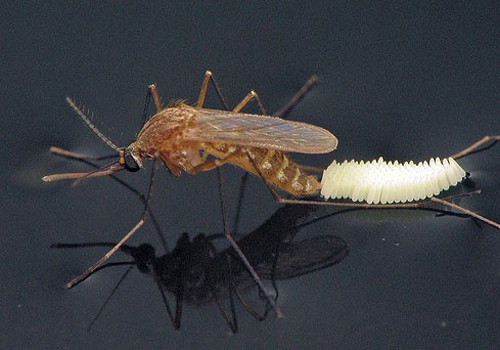
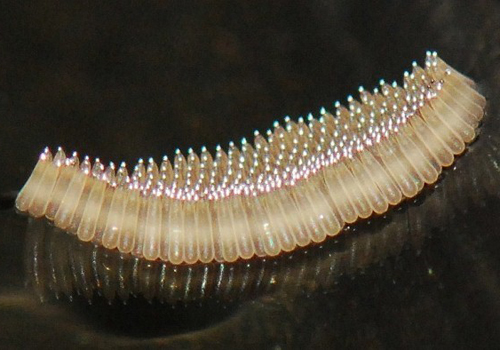
Ades Mosquitoes
They are active day biters and humans are their preferred hosts.
Lay eggs singly on or near the surface of temporary water sources (e.g., used tires, flower pots, pools, roof tanks).
Transmit diseases : Zika, Chikungunya, Yellow Fever, Dengue.
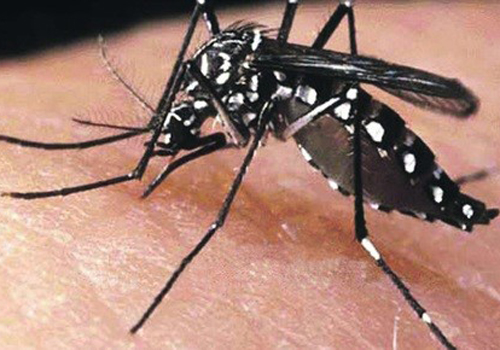
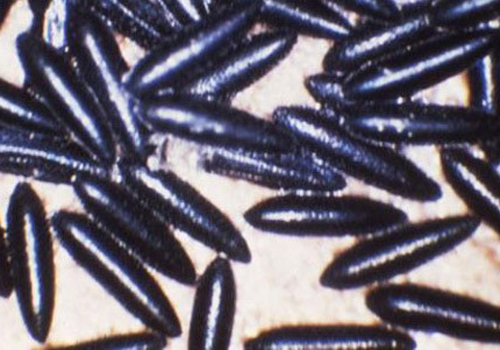
Anopheles Mosquitoes
Bite indoors and outdoors between dusk and dawn and prefer human and mammal hosts.
Lay eggs with floats on the surface of natural, vegetated water bodies (e.g., ponds, marshes, swamps).
Transmit diseases: Malaria
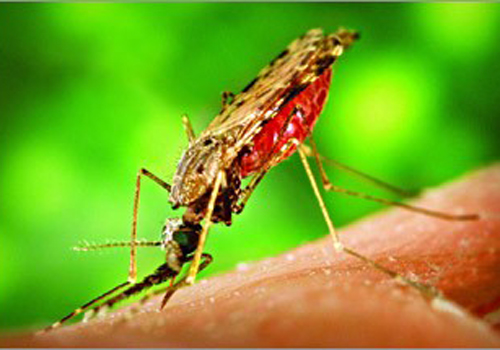
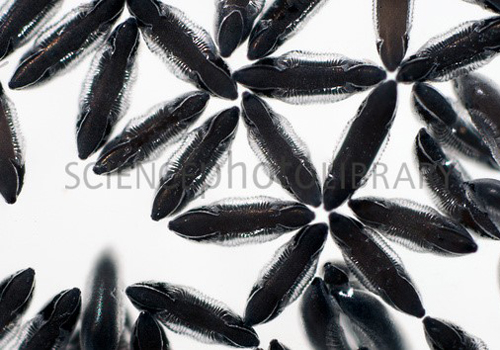
Life Cycle
The length of the mosquito life cycle varies between species and is dependent upon environmental conditions such as temperature and moisture. However, the life cycle of all mosquitoes is comprised of the egg, larvae, pupae, and adult stages.
Male mosquitoes feed on plant nectar alone, while females extract the blood of hosts in order to develop and nourish eggs. Most mosquitoes lay their eggs directly into water. Others lay their eggs near bodies of water but not within them.
Eggs will hatch into larvae within 24 to 48 hours. Larvae soon grow to become approximately 5 mm in length. Most larvae breathe through air tubes. Larger larvae can be seen floating just above the surface of infested waters. Larvae and pupae usually cannot survive without water. If a water source evaporates before the larvae and pupae within it transform into adult mosquitoes, those young often will die.
Within seven to ten days, larvae enter the pupal stage. Pupae are also visible upon the surface of the breeding site. After a mosquito is fully developed, it will emerge as an adult from its pupal case. At this time, the new adult stands upon the water and dries its wings to prepare for flight. Adult female mosquitoes will then seek an animal on which to feed. Females are capable of flying for miles if necessary and can lay over 100 eggs at a time.
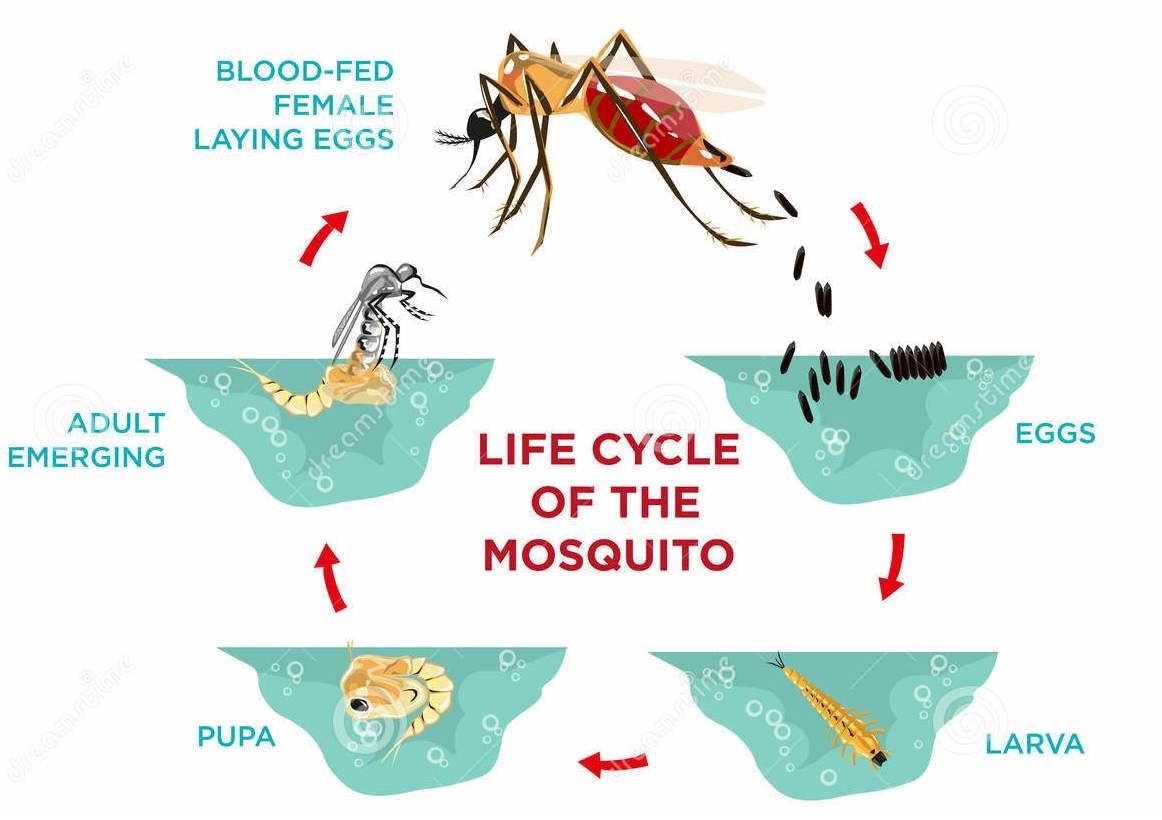
Mosquitoes in the Home
When mosquitoes find their way inside your home through an open door or window, they usually rest in dark, hidden areas, but will come out at night in search of a blood meal. Homeowners sometimes find mosquitoes under sinks or in closets and laundry rooms.
Mosquitoes in the yard
Mosquitoes breed in standing water, so properties near ponds, marshes, and depressions that collect rainwater are at risk. Some mosquito species are active at different times of the day, but most emerge just before dusk and are active at night.
Signs of a mosquito infestation
Signs of mosquito activity include the buzzing of the females and their potential bites. People have differing reactions to bites, ranging from mild irritation to intense inflammation and swelling. The presence of standing water can also provide the optimal environment for mosquito reproduction. Nymphs are found in standing water areas such as water bowls for pets, potted plants, bird feeders, and stagnant ponds.
Problems With Mosquitoes?
You step outside and you’re under attack. That’s frustrating enough. But mosquitoes can also carry disease. That’s why you should get professional help to stop them.
Don’t wait. Get our mosquito service and we will get to work putting your mosquito concerns behind you.

